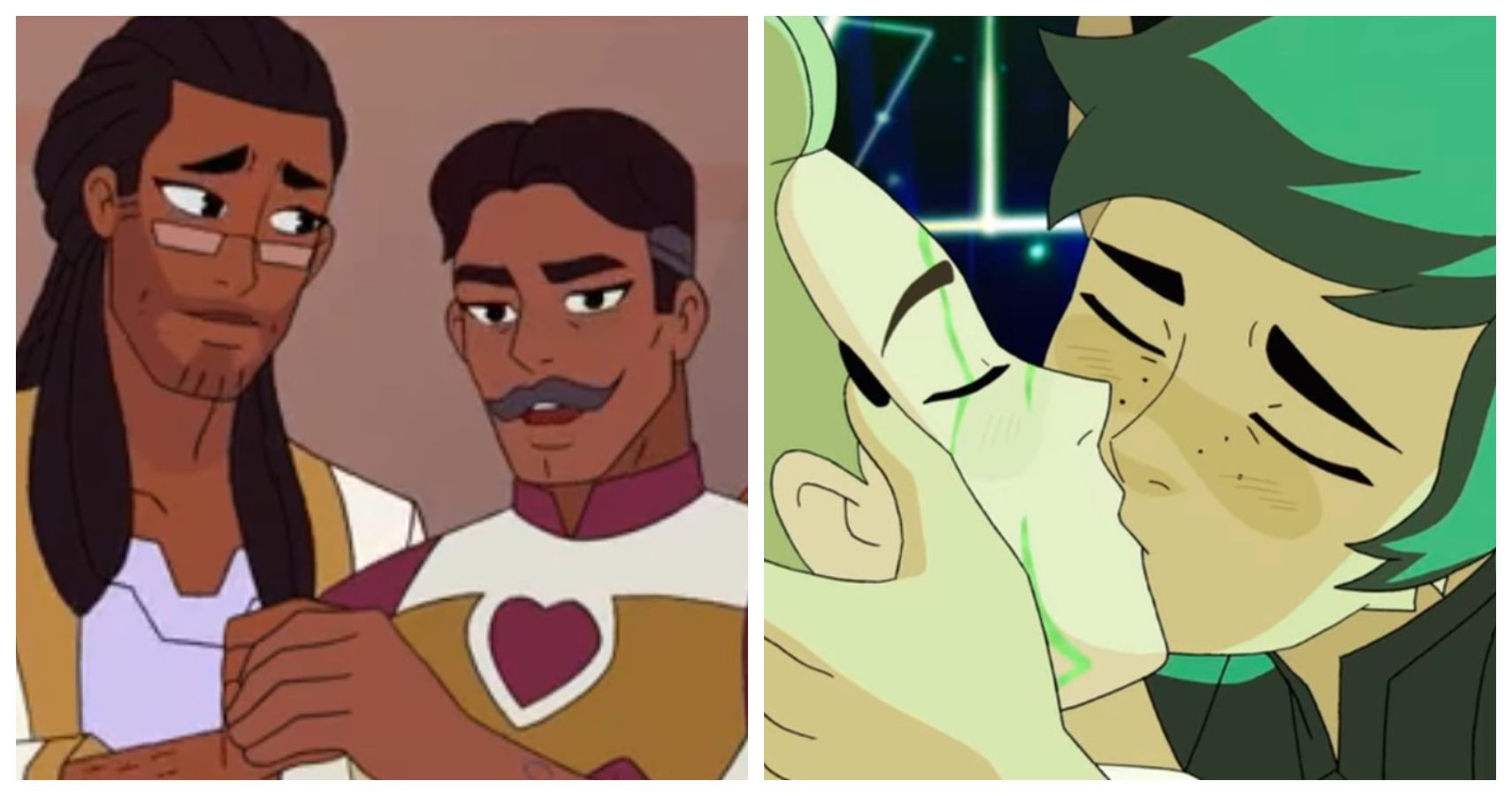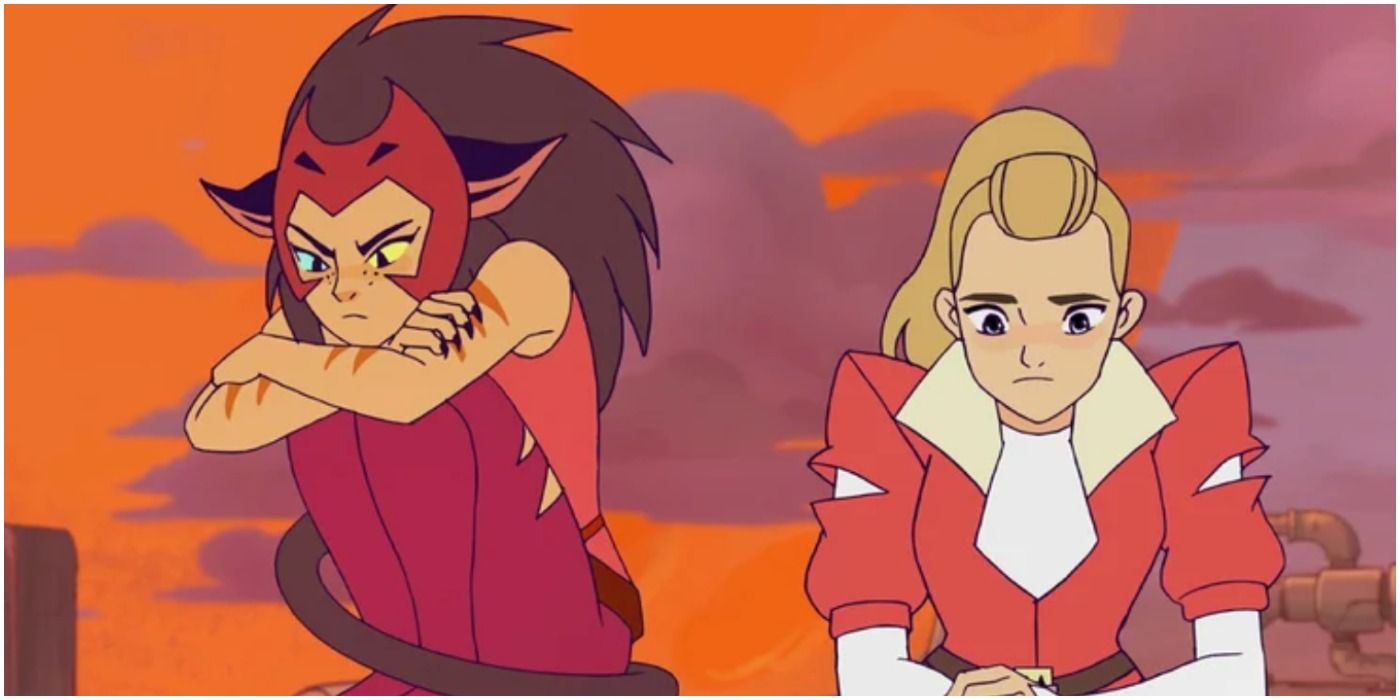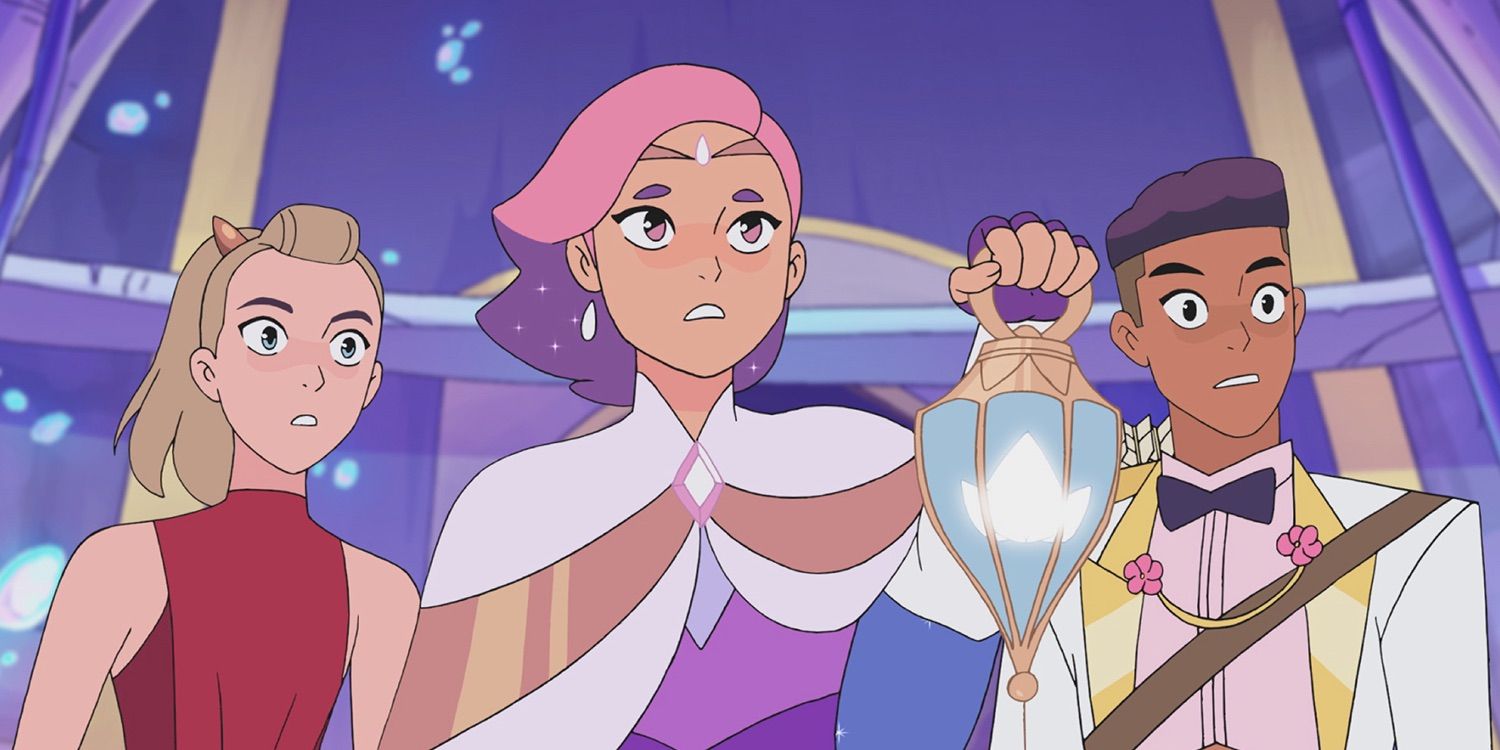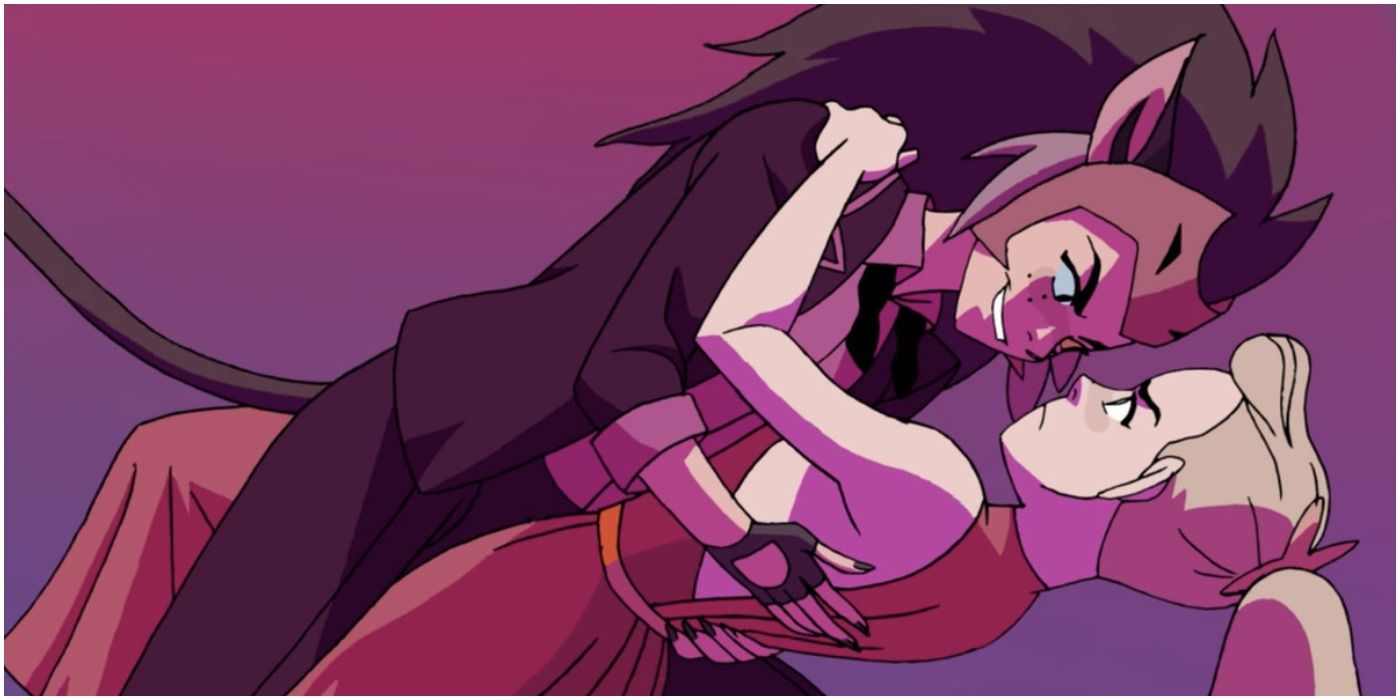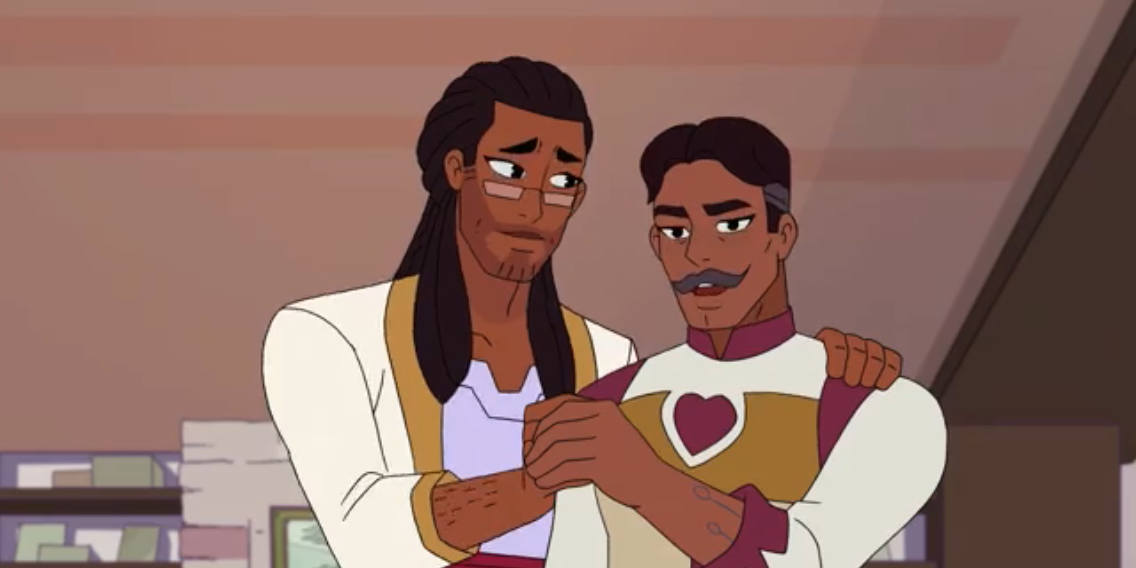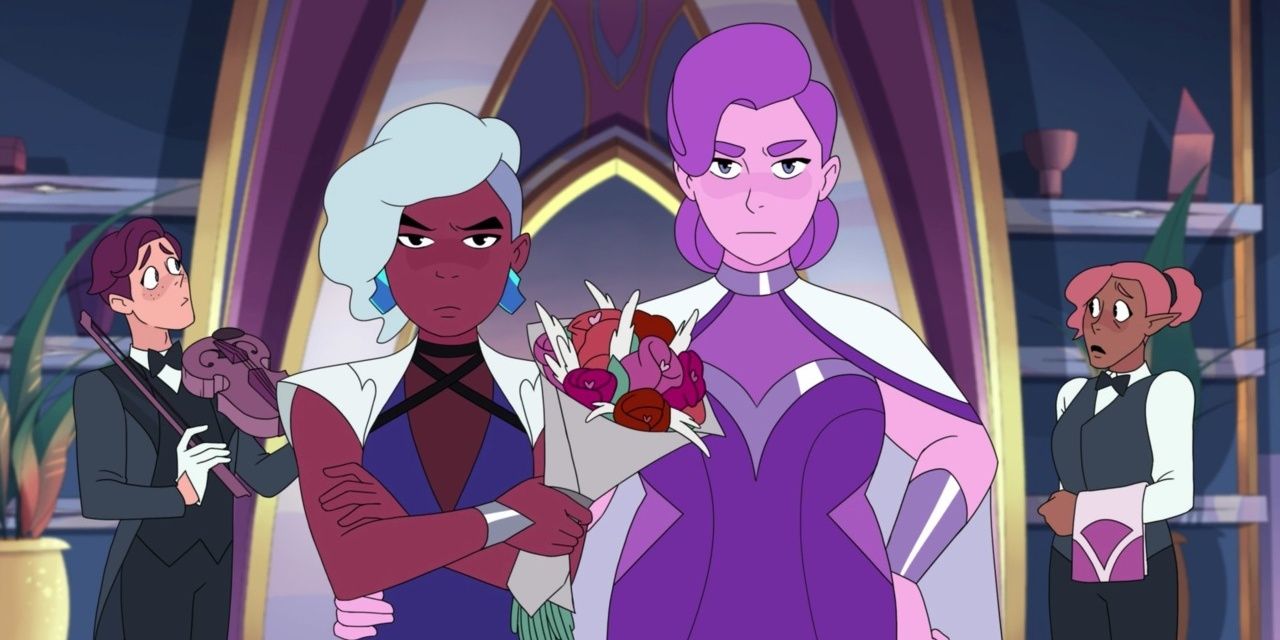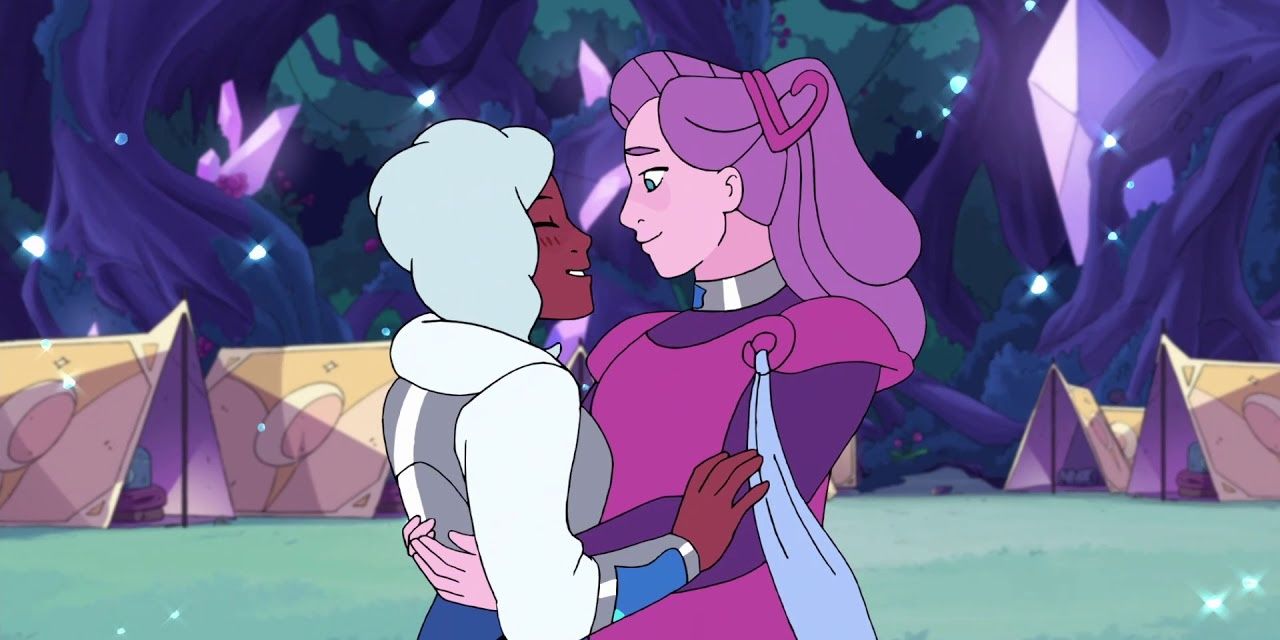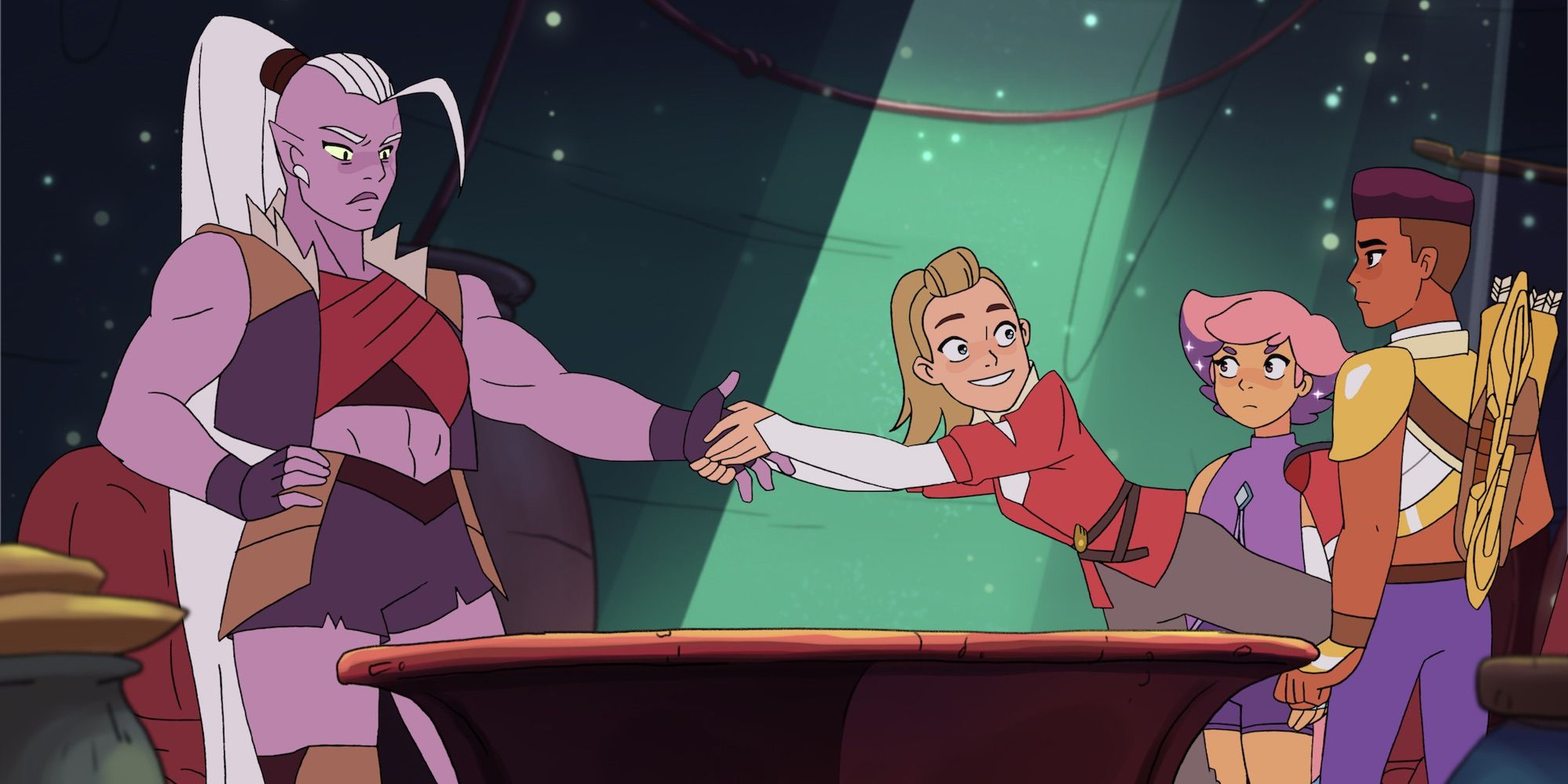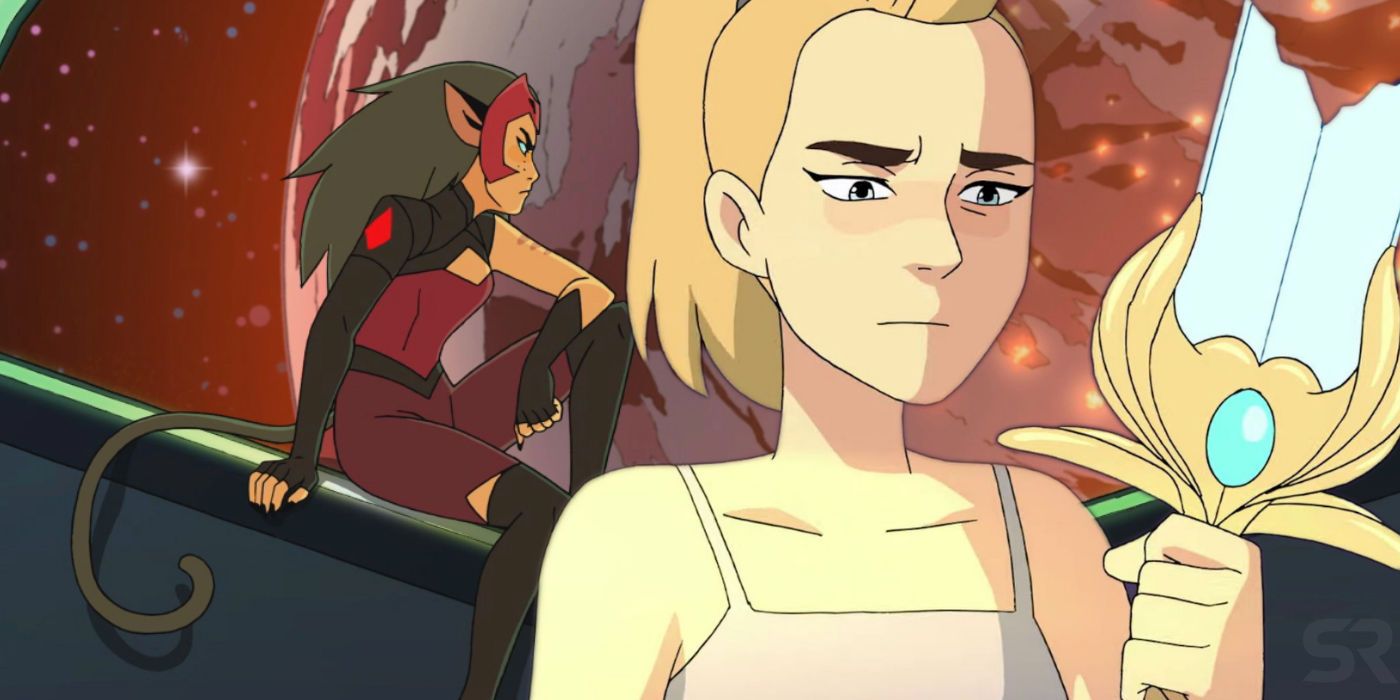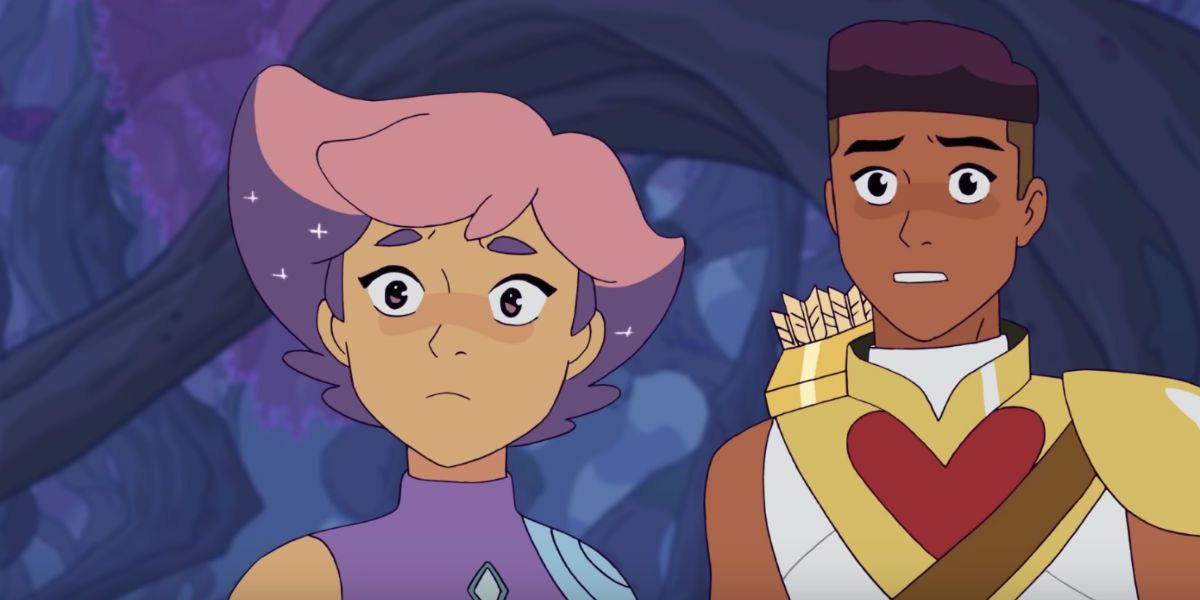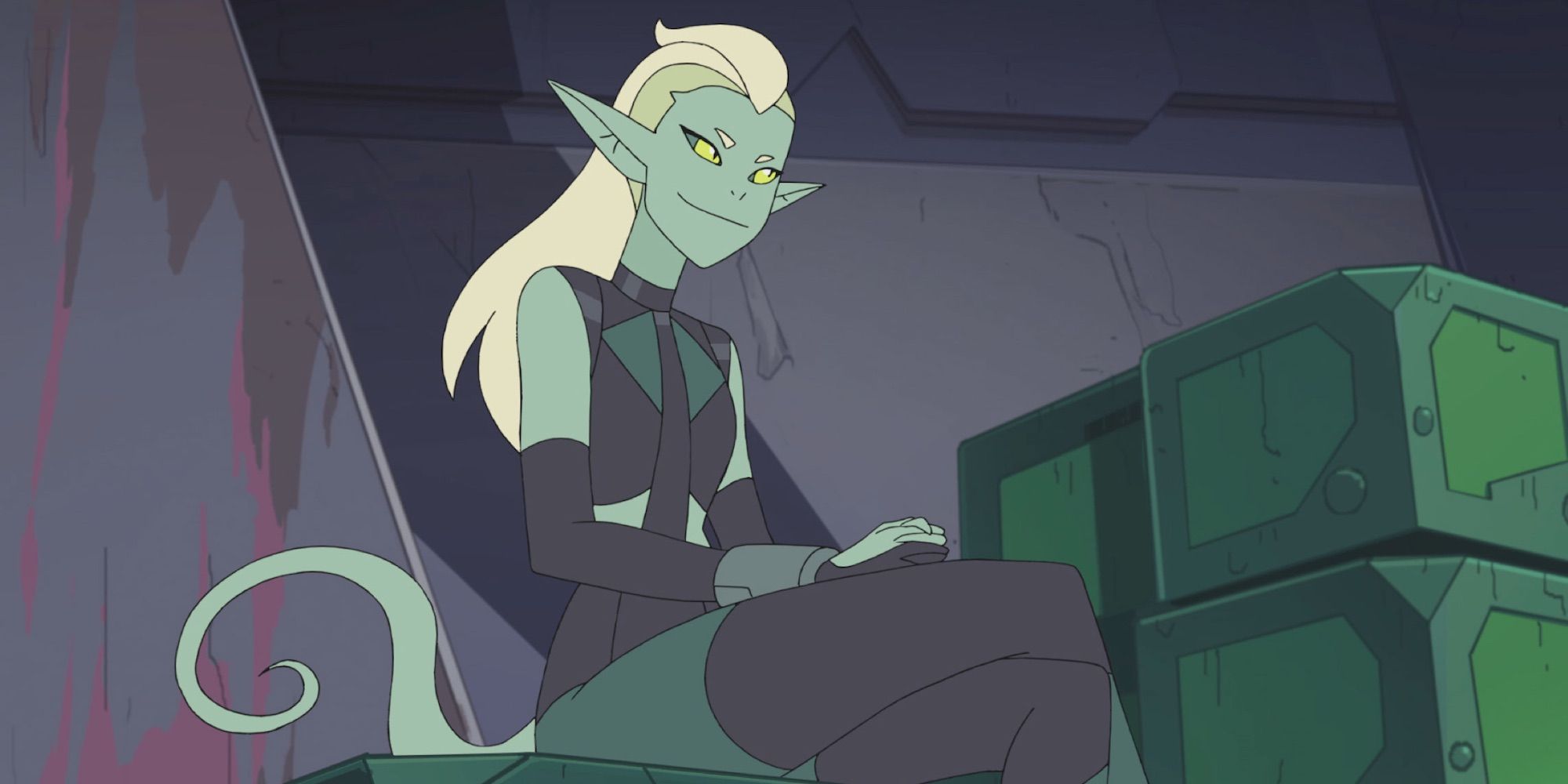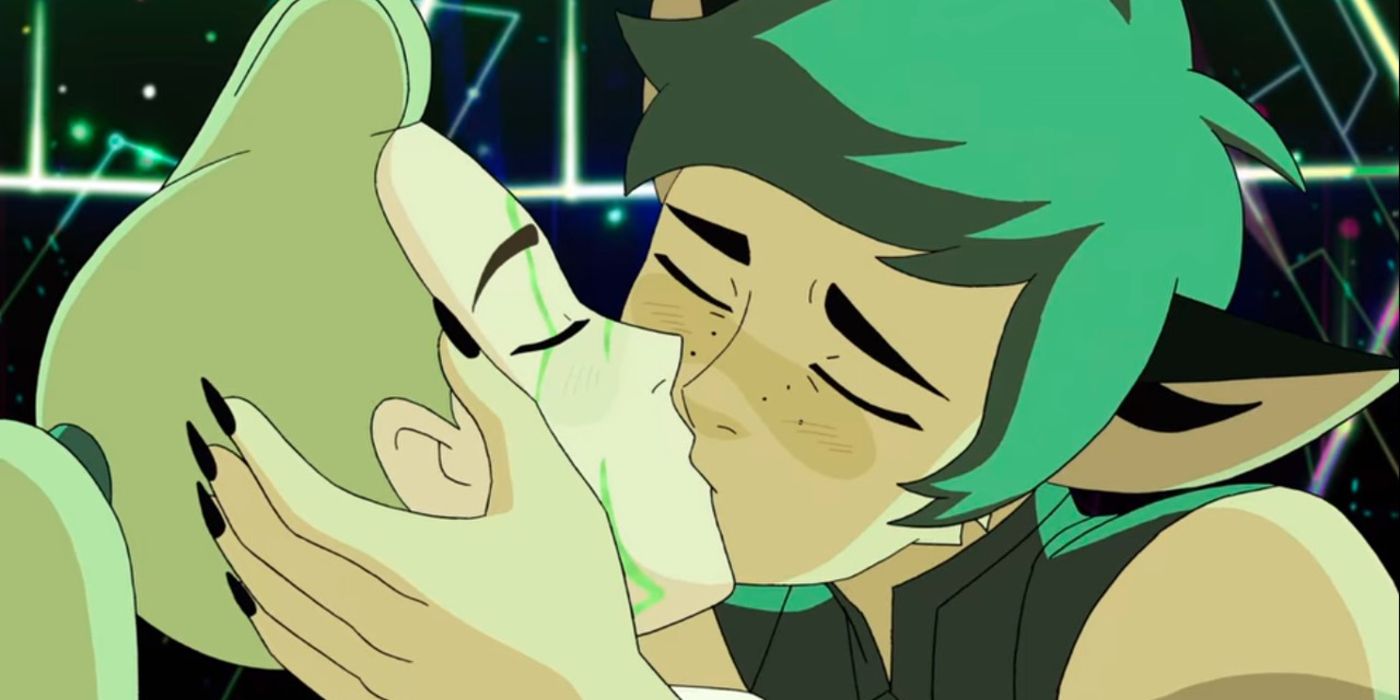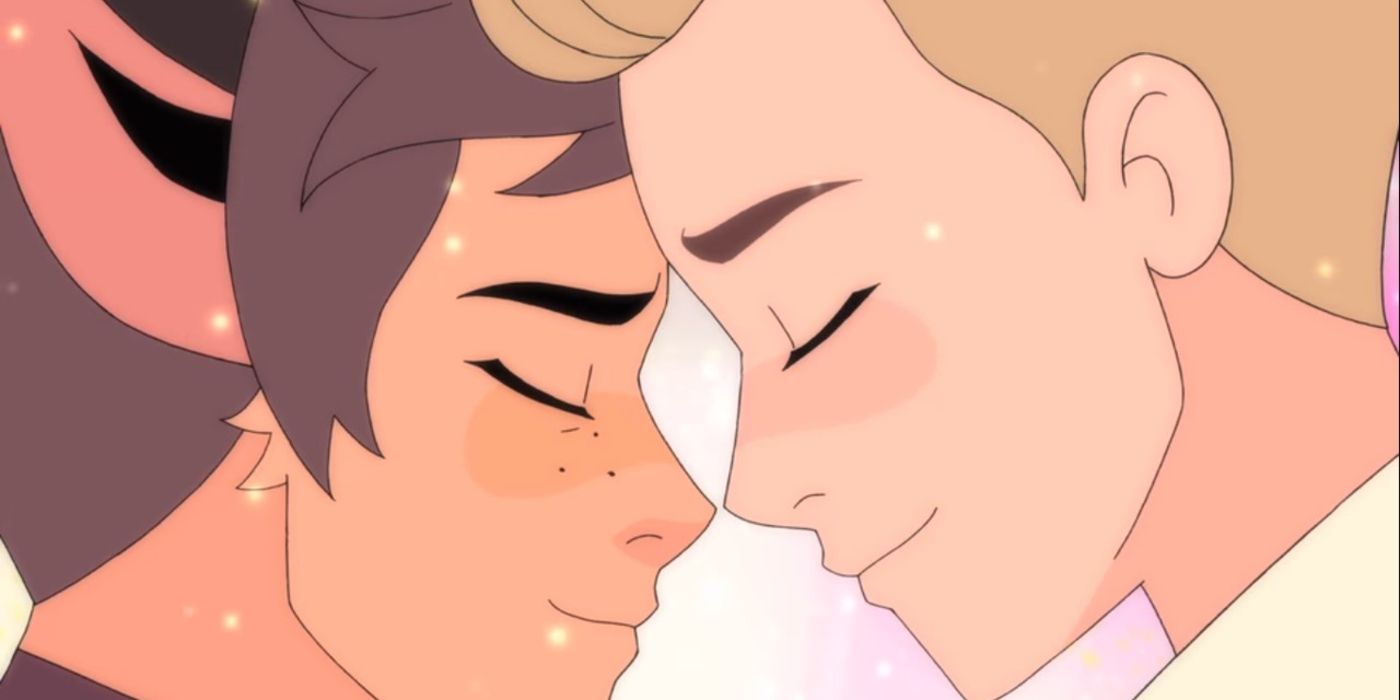The show She-Ra and the Princesses of Power, a current Netflix remake of the classic series, has become an extremely important series in terms of LGBTQ+ representation. This Dreamworks series has done something that no popular animated children’s series has ever done before by letting the main character be in a queer relationship.
While fans wondered and hoped over the past four seasons if the series would actually make Adora and Catra canon, the series was finally able to follow through by making their relationship explicitly romantic. However, this isn’t the only example of great queer representation in the series.
That Adora and Catra's relationship was central to the entire plot
While there have been other animated series with LGBT+ representation, none of them have handled it as well as She-Ra. While Legend of Korra had Korra end up with Asami, this relationship was only made clear in the comics, and their relationship wasn’t a driving character development element.
Other series such as Steven Universe have also had queer representation, but never on the level of main characters. The relationship between Adora and Catra was essential to the plot and character development of these characters from the beginning which sets this series apart.
Showing casual intimacy between friends of all genders
While clear LGBT+ representation that shows romance and physical relationships between characters is very important, there are many facets of queer identity. One big theme in the LGBT+ community is that of looking at relationships in new ways and recognizing the importance of friendships.
The series shows its characters, regardless of gender, have deep, intimate friendships where they are comfortable with hugging, holding hands and being affectionate with one another, and this is also important for kids to see.
The Princess Prom
While nobody in this iconic episode from season one was confirmed to be LGBT+ at this point, the subtext was really strong.
It was really this scene that started to put the series on the map being open to queerness, and many fans started to hope that there would be more clear representation in the future. While no one was confirmed to be any sexuality in season one, this episode had Adora and Catra dance together and showed Catra in what many viewed as a queer style of dress.
Learning that Bow had two dads
While season one didn’t have a lot of explicit LGBT moments as the series laid the groundwork, and, according to creator Noelle Stevenson, had to prove to the studio that the story needed representation, later seasons had more rep.
In season two, it was shown that Bow had two dads named George and Lance. Showing a canon gay male couple that had a family and were happy together was one of the first and most important moments of LGBT+ representation in the series.
The confirmation that Netossa and Spinnerella were wives
In the first season of the series, it was hinted that these two were a couple, but as the series went on the nature of their relationship was made clearer.
There was a flashback scene that shows what looked like their wedding, but season five made their relationship crystal clear. These two reference one another as wives and call each other by pet names, and including a lesbian couple in a casual, normalized way was a good move on She-Ra’s part.
The casual kisses between Netossa and Spinnerella
While showing that two characters of the same gender are a couple through their words is important, it’s also necessary to show casual intimacy between queer couples. In season five especially, Netossa and Spinerella were able to be physically affectionate with one another and even kiss.
This is a great thing as it shows fans of all ages that these relationships are normal and beautiful, and it puts queer relationships on the same level as straight ones.
The inclusion of many gender expressions
One thing that many fans have pointed out is how queer the show feels overall. While there are many specific moments to point to, there is also an overall outlook of diversity, friendship, love, and compassion that make She-Ra stand out.
While some characters are never confirmed to be any particular sexuality, the series does show a range of gender expression. Including characters like Scorpia and Huntara who are strong and possibly more “butch” is important as it shows children that you can express your gender in any way. Even Adora is shown to be quite strong and not just a stereotype of a female hero, and characters like Bow don’t have to be hypermasculine either.
The imaginary future with Catra that Adora saw
As season five went along, many fans watched things unfold and saw that the relationship with Adora and Catra was becoming more and more obviously romantic.
While the big moment didn’t come until the final episode, in a vision Adora has of a possible happy future she wishes for, fans saw something inspiring. In this vision, Adora and Catra are going to a ball together, and it’s clear that what Adora wants more than anything is to be happy with Catra and surrounded by her friends, too.
Straight couples don’t get more romantic moments than queer couples
Another groundbreaking thing about the representation on this show is how it doesn’t prioritize straight couples. There are some straight couples, such as Glimmer’s parents Micah and Angella, but they don’t get much more focus as a couple than the side queer couples. Even Bow and Glimmer, who are alluded to being a couple and in love in the final season, don’t get more moments of intimacy than Adora and Catra.
Putting all kinds of romantic couples on the same level in this way is very rare.
Including a non-binary character with Double Trouble
While She-Ra has been groundbreaking in regard to including characters of different sexualities, it also had a good moment of representation by including a non-binary character. Double Trouble goes by the pronoun they, and this is just a normalized and casual thing.
The character is also voiced by Jacob Tobia who is an actual nonbinary person. This is another important way that the series has included LGBT+ diversity in a way that makes it easy for all fans of all ages to relate to. It’s important for children especially to see non-binary characters included and respected.
When Catra and Adora finally kissed and said they loved one another
With all of the subtextual moments and scenes that made fans believe Adora and Catra were in love, many still worried that the series wouldn’t be able to make them an explicit couple as, even these days, big studios are often hesitant to allow this.
So, when Adora and Catra declared their love for each other by literally saying “I love you” and then kissed, it was a groundbreaking scene. Fans were thrilled that She-Ra was able to deliver the story it had promised and been building to.
Showing that Adora and Catra got a happy ending
While there are more LGBTQIA+ characters in the media today than ever before, there are still some unfortunate tropes that are quite troubling. One of these tropes is known as “bury your gays” and refers to the high number of queer characters who are killed or have unhappy endings.
The creators of She-Ra and the Princesses of Power refused to add to this troubling trend and instead gave Adora and Catra the happy ending they deserve standing side by side with their friends.

